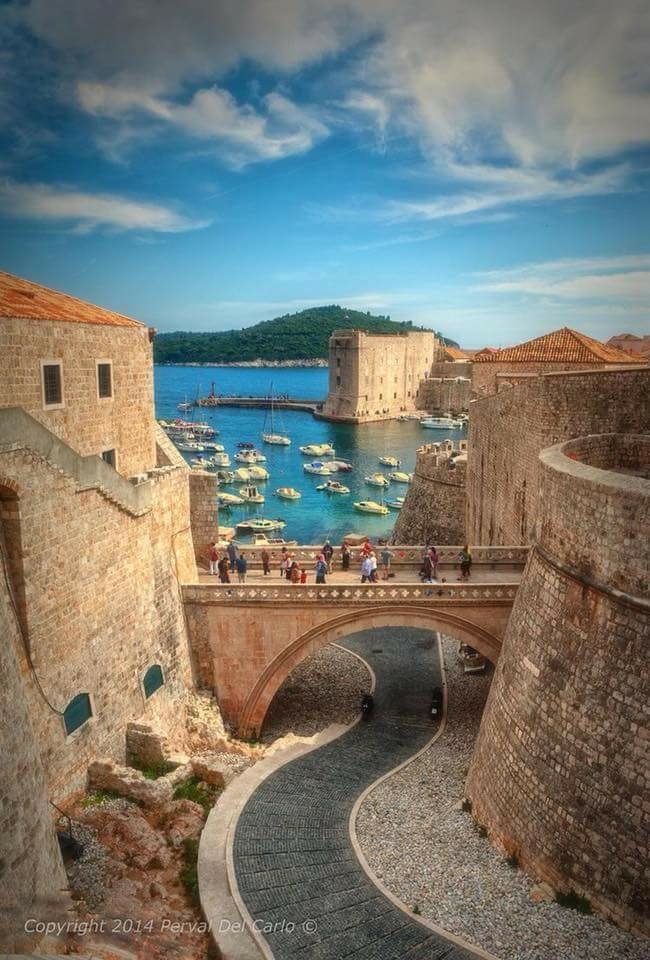
Dubrovnik is a city in southern Croatia fronting the Adriatic Sea. It’s known for its distinctive Old Town, encircled with massive stone walls completed in the 16th century. Its well-preserved buildings range from baroque St. Blaise Church to Renaissance Sponza Palace and Gothic Rector’s Palace, now a history museum. Paved with limestone, the pedestrianized Stradun (or Placa) is lined with shops and restaurants. A walk along Dubrovnik’s famous city walls that surrounds the Old Town is a unique and wonderful experience and a must-do when visiting Dubrovnik.
The walls are 1,940 metres long and you can walk all the way around them (it usually takes about 2 hours). However, you can get down half way. During this walk you will explore Dubrovnik from a completely new angle. You will climb the highest point of Dubrovnik’s Old Town – the rounded Minceta Fortress, from where you can enjoy amazing views over the city’s red roofs and St John’s Fortress, housing the Aquarium and Maritime Museum, which is located at the entrance of the Old Harbour. Don’t miss Lovrijenac Fortress which is located across the city walls and rises up on a 37 metre high cliff. Walking along the southern section of the city’s walls you can enjoy a view of the sailing boats and kayakers as they pass by. You will also see Buza beach – a rocky spot beneath the city walls – this is a unique hidden place for swimming and sunbathing.
Dubrovnik is a medieval city with a medieval infrastructure, street network and – most important – the medieval city walls. On the other hand, most of its public spaces and public buildings are examples of the Baroque. The reason is that most of the buildings that we see today in Dubrovnik were built after the great earthquake of 1667. The earthquake destroyed almost everything, only the walls remaining almost untouched, being of such massive and solid construction. After the great earthquake almost the entire town was rebuilt and Dubrovnik is not one of those cities with a particular unified style.
In some Italian cities you will find more perfect examples of Gothic, Renaissance and Baroque architecture, but not the whole package. In Dubrovnik, the whole package is more important than its parts”. It is important to note that the criteria inside and outside the city walls are not the same, and here we are talking about the characteristics of the architecture inside the walls.
Dubrovnik is a medieval city with a medieval infrastructure, street network and – most important – the medieval city walls. On the other hand, most of its public spaces and public buildings are examples of the Baroque. The reason is that most of the buildings that we see today in Dubrovnik were built after the great earthquake of 1667. The earthquake destroyed almost everything, only the walls remaining almost untouched, being of such massive and solid construction. After the great earthquake almost the entire town was rebuilt and Dubrovnik is not one of those cities with a particular unified style.
In some Italian cities you will find more perfect examples of Gothic, Renaissance and Baroque architecture, but not the whole package. In Dubrovnik, the whole package is more important than its parts”. It is important to note that the criteria inside and outside the city walls are not the same, and here we are talking about the characteristics of the architecture inside the walls.
Subscribe
Login
0 Comments
